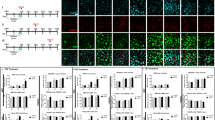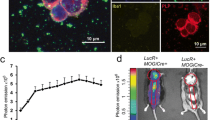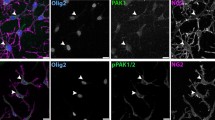Abstract
Galectin-3 (Gal-3) is a chimeric protein structurally composed of unusual tandem repeats of proline and short glycine-rich segments fused onto a carbohydrate recognition domain. Our studies have previously demonstrated that Gal-3 drives oligodendrocyte (OLG) differentiation to control myelin integrity and function. The cytoskeleton plays a key role in OLG maturation: the initial stage of OLG process extension requires dynamic actin filament assembly, while subsequent myelin wrapping coincides with the upregulation of actin disassembly proteins which are dependent on myelin basic protein (MPB) expression. In this context, the aim of the present work was to elucidate the mechanism by which recombinant Gal-3 (rGal-3) induces OLG maturation, giving special attention to the actin cytoskeleton. Our results show that rGal-3 induced early actin filament assembly accompanied by Erk signaling deactivation, which led to a decrease in the number of platelet-derived growth factor receptor α (PDGFRα)+ cells concomitantly with an increase in the number of 2′,3′-cyclic-nucleotide 3′-phosphodiesterase (CNPase)+ cells at 1 day of treatment (TD1), and Akt signaling activation at TD1 and TD3. Strikingly, rGal-3 induced an accelerated shift from polymerized to depolymerized actin between TD3 and TD5, accompanied by a significant increase in MBP, gelsolin, Rac1, Rac1-GTP, and β-catenin expression at TD5. These results were strongly supported by assays using Erk 1/2 and Akt inhibitors, indicating that both pathways are key to rGal-3-mediated effects. Erk 1/2 inhibition in control-treated cells resembled an rGal-3 like state characterized by an increase in MBP, β-catenin, and gelsolin expression. In contrast, Akt inhibition in rGal-3-treated cells reduced MBP, β-catenin, and gelsolin expression, indicating a blockade of rGal-3 effects. Taken together, these results indicate that rGal-3 accelerates OLG maturation by modulating signaling pathways and protein expression which lead to changes in actin cytoskeleton dynamics.








Similar content being viewed by others
References
Bercury KK, Macklin WB (2015) Dynamics and mechanisms of CNS myelination. Dev Cell 32:447–458. https://doi.org/10.1016/j.devcel.2015.01.016
Nave KA, Werner HB (2014) Myelination of the nervous system: mechanisms and functions. Annu Rev Cell Dev Biol 30:503–533. https://doi.org/10.1146/annurev-cellbio-100913-013101
Snaidero N, Simons M (2017) The logistics of myelin biogenesis in the central nervous system. Glia 65:1021–1031. https://doi.org/10.1002/glia.23116
Shao Z, Lee X, Huang G, Sheng G, Henderson CE, Louvard D, Sohn J, Pepinsky B et al (2017) LINGO-1 regulates oligodendrocyte differentiation through the cytoplasmic gelsolin signaling pathway. J. Neurosci 37(12):3127–3137. https://doi.org/10.1523/JNEUROSCI.3722-16.2017
Nawaz S, Sánchez P, Schmitt S, Snaidero N, Mitkovski M, Velte C, Brückner BR, Alexopoulos I et al (2015) Actin filament turnover drives leading edge growth during myelin sheath formation in the central nervous system. Dev Cell 34:139–151. https://doi.org/10.1016/j.devcel.2015.05.013
Zuchero JB, Fu MM, Sloan SA, Ibrahim A, Olson A, Zaremba A, Dugas JC, Wienbar S et al (2015) CNS myelin wrapping is driven by actin disassembly. Dev Cell 34:152–167. https://doi.org/10.1016/j.devcel.2015.06.011
Nawaz S, Kippert A, Saab AS, Werner HB, Lang T, Nave KA, Simons M (2009) Phosphatidylinositol 4,5-bisphosphate-dependent interaction of myelin basic protein with the plasma membrane in oligodendroglial cells and its rapid perturbation by elevated calcium. J Neurosci 29:4794–4807. https://doi.org/10.1523/JNEUROSCI.3955-08.2009
Aggarwal S, Yurlova L, Snaidero N, Reetz C, Frey S, Zimmermann J, Pähler G, Janshoff A et al (2011) A size barrier limits protein diffusion at the cell surface to generate lipid-rich myelin-membrane sheets. Dev Cell 21:445–456. https://doi.org/10.1016/j.devcel.2011.08.001
Pollard TD, Blanchoin L, Mullins RD (2000) Molecular mechanisms controlling actin filament dynamics in nonmuscle cells. Ann Rev Biophys Biomol Struct 29:545–576. https://doi.org/10.1146/annurev.biophys.29.1.545
Kim H-J, DiBernardo AB, Sloane JA, Rasband MN, Solomon D, Kosaras B, Kwak SP, Vartanian TK (2006) WAVE1 is required for oligodendrocyte morphogenesis and normal CNS myelination. J. Neurosci 26:5849–5859. https://doi.org/10.1523/JNEUROSCI.4921-05.2006
Xue B, Robinson RC (2013) Guardians of the actin monomer. Eur J Cell Biol 92(10-11):316–332. https://doi.org/10.1016/j.ejcb.2013.10.012
Guardiola-Diaz HM, Ishii A, Bansal R (2012) Erk1/2 MAPK and mTOR signaling sequentially regulates progression through distinct stages of oligodendrocyte differentiation. Glia 60:476–486
Narayanan SP, Flores AI, Wang F, Macklin WB (2009) Akt signals through the mammalian target of rapamycin pathway to regulate CNS myelination. J Neurosci 29:6860–6870
Tyler WA, Gangoli N, Gokina P, Kim HA, Covey M, Levison SW, Wood TLJ (2009) Activation of the mammalian target of rapamycin (mTOR) is essential for oligodendrocyte differentiation. Neurosci 29:6367–6378
Bercury KK, Dai J, Sachs HH, Ahrendsen JT, Wood TL, Macklin WB (2014) Conditional ablation of raptor or rictor has differential impact on oligodendrocyte differentiation and CNS myelination. J Neurosci 34:4466–4480
Fancy SP, Baranzini SE, Zhao C, Yuk DI, Irvine KA, Kaing S, Sanai N, Franklin RJ et al (2009) Dysregulation of the Wnt pathway inhibits timely myelination and remyelination in the mammalian CNS. Genes Dev 23:1571–1585
Feigenson K, Reid M, See J, Crenshaw EB 3rd, Grinspan JB (2009) Wnt signaling is sufficient to perturb oligodendrocyte maturation. Mol Cell Neurosci 42:255–265
Ye F, Chen Y, Hoang T, Montgomery RL, Zhao XH, Bu H, Hu T, Taketo MM et al (2009) HDAC1 and HDAC2 regulate oligodendrocyte differentiation by disrupting the beta-catenin-TCF interaction. Nat Neurosci 12:829–838
Kalani MY, Cheshier SH, Cord BJ, Bababeygy SR, Vogel H, Weissman IL, Palmer TD, Nusse R (2008) Wnt-mediated self-renewal of neural stem/progenitor cells. Proc Natl Acad Sci 105:16970–16975
Ortega F, Gascón S, Masserdotti G, Deshpande A, Simon C, Fischer J, Dimou L, Chichung Lie D et al (2013) Oligodendrogliogenic and neurogenic adult subependymal zone neural stem cells constitute distinct lineages and exhibit differential responsiveness to Wnt signalling. Nat Cell Biol 15:602–613
Tawk M, Makoukji J, Belle M, Fonte C, Trousson A, Hawkins T, Li H, Ghandour S et al (2011) Wnt/beta-catenin signaling is an essential and direct driver of myelin gene expression and myelinogenesis. J Neurosci 31:3729–3742
Nabi IR, Shankar J, Dennis JW (2015) The galectin lattice at a glance. J Cell Sci 128:2213–2219. https://doi.org/10.1242/jcs.151159
Laderach DJ, Compagno D, Toscano MA, Croci DO, Dergan-Dylon S, Salatino M, Rabinovich GA (2010) Dissecting the signal transduction pathways triggered by galectin–glycan interactions in physiological and pathological settings. IUBMB Life 62:1–13. https://doi.org/10.1002/iub.281.
Saravanan C, Liu FT, Gipson IK, Panjwani N (2009) Galectin-3 promotes lamellipodia formation in epithelial cells by interacting with complex N-glycans on alpha3beta1 integrin. J Cell Sci 122:3684–3693. https://doi.org/10.1242/jcs.045674
Lagana A, Goetz JG, Cheung P, Raz A, Dennis JW, Nabi IR (2006) Galectin binding to Mgat5-modified N-glycans regulates fibronectin matrix remodeling in tumor cells. Mol Cell Biol 26:3181–3193. https://doi.org/10.1128/MCB.26.8.3181-3193.2006
Pasquini LA, Millet V, Hoyos HC, Giannoni JP, Croci DO, Marder M, Liu FT, Rabinovich GA et al (2011) Galectin-3 drives oligodendrocyte differentiation to control myelin integrity and function. Cell Death Differ 18:1746–1756. https://doi.org/10.1038/cdd.2011.40
Hoyos HC, Rinaldi M, Mendez-Huergo SP, Marder M, Rabinovich GA, Pasquini JM, Pasquini LA (2014) Galectin-3 controls the response of microglial cells to limit cuprizone-induced demyelination. Neurobiol Dis 62:441–455. https://doi.org/10.1016/j.nbd.2013.10.023
Hoyos HC, Marder M, Ulrich R, Gudi V, Stangel M, Rabinovich GA, Pasquini LA, Pasquini JM (2016) The role of galectin-3: from oligodendroglial differentiation and myelination to demyelination and remyelination processes in a cuprizone-induced demyelination model. Adv Exp Med Biol 949:311–332. https://doi.org/10.1007/978-3-319-40764-7_15.
Haines JD, Vidaurre OG, Zhang F, Riffo-Campos ÁL, Castillo J, Casanova, Casaccia P, Lopez-Rodas G (2015) Multiple sclerosis patient-derived CSF induces transcriptional changes in proliferating oligodendrocyte progenitors. Mult Scler 21:1655–1669. https://doi.org/10.1177/1352458515573094
Salomonsson E, Carlsson MC, Osla V, Hendus-Altenburger R, Kahl-Knutson B, Oberg CT, Sundin A, Nilsson R et al (2010) Mutational tuning of galectin-3 specificity and biological function. J Biol Chem 285:35079–35091. https://doi.org/10.1074/jbc.M109.098160
Gonsalvez D, Ferner AH, Peckham H, Murray SS, Xiao J (2016) The roles of extracellular related-kinases 1 and 2 signaling in CNS myelination. Neuropharmacology 110:586–593. https://doi.org/10.1016/j.neuropharm.2015.04.024.
Gaesser JM, Fyffe-Maricich SL (2016) Intracellular signaling pathway regulation of myelination and remyelination in the CNS. Exp Neurol 283:501–511. https://doi.org/10.1016/j.expneurol.2016.03.008.
Wheeler NA, Fuss B (2016) Extracellular cues influencing oligodendrocyte differentiation and (re)myelination. Exp Neurol 283:512–530. https://doi.org/10.1016/j.expneurol.2016.03.019
Liu Z, Xu D, Wang S, Chen Y, Li Z, Gao X, Jiang L, Tang Y et al (2017) Astrocytes induce proliferation of oligodendrocyte progenitor cells via connexin 47-mediated activation of the ERK/Id4 pathway. Cell Cycle 16:714–722. https://doi.org/10.1080/15384101.2017.1295183
Kuroda M, Muramatsu R, Yamashita T (2017) Cardiomyocyte-released factors stimulate oligodendrocyte precursor cells proliferation. Biochem Biophys Res Commun 482:1160–1164. https://doi.org/10.1016/j.bbrc.2016.12.004
Alge-Priglinger CS, André S, Schoeffl H, Kampik A, Strauss RW, Kernt M, Gabius HJ, Priglinger SG (2011) Negative regulation of RPE cell attachment by carbohydrate-dependent cell surface binding of galectin-3 and inhibition of the ERKeMAPK pathway. Biochimie 93:477–488. https://doi.org/10.1016/j.biochi.2010.10.021
Mendoza MC, Er EE, Zhang W, Ballif BA, Elliott HL, Danuser G, Blenis J (2011) ERK-MAPK drives lamellipodia protrusion by activating the WAVE2 regulatory complex. Mol Cell 41:661–671. https://doi.org/10.1016/j.molcel.2011.02.031
Morley SC, Sung J, Sun GP, Martelli MP, Bunnell SC, Bierer BE (2007) Gelsolin overexpression alters actin dynamics and tyrosine phosphorylation of lipid raft-associated proteins in Jurkat T cells. Mol Immunol 44:2469–2480. https://doi.org/10.1016/j.molimm.2006.09.024
Buongiorno P, Pethe VV, Charames GS, Esufali S, Bapat B (2008) Rac1 GTPase and the Rac1 exchange factor Tiam1 associate with Wnt-responsive promoters to enhance beta-catenin/TCF-dependent transcription in colorectal cancer cells. Mol Cancer 7:73. https://doi.org/10.1186/1476-4598-7-73
Wu X, Tu X, Joeng KS, Hilton MJ, Williams DA, Long F (2008) Rac1 activation controls nuclear localization of b-catenin during canonical Wnt signaling. Cell 133:340–353. https://doi.org/10.1016/j.cell.2008.01.052
Thurnherr T, Benninger Y, Wu X, Chrostek A, Krause SM, Nave KA, Franklin RJ, Brakebusch C et al (2006) Cdc42 and Rac1 signaling are both required for and act synergistically in the correct formation of myelin sheaths in the CNS. J Neurosci 26:10110–10119
Flores AI, Narayanan SP, Morse EN, Shick HE, Yin X, Kidd G, Avila RL, Kirschner DA et al (2008) Constitutively active Akt induces enhanced myelination in the CNS. J Neurosci 28(28):7174–7183
Goebbels S, Oltrogge JH, Kemper R, Heilmann I, Bormuth I, Wolfer S, Wichert SP, Möbius W et al (2010) Elevated phosphatidylinositol 3,4,5-trisphosphate in glia triggers cell-autonomous membrane wrapping and myelination. J Neurosci 30:8953–8964. https://doi.org/10.1523/JNEUROSCI.0219-10.2010
Harrington EP, Zhao C, Fancy SP, Kaing S, Franklin RJ, Rowitch DH (2010) Oligodendrocyte PTEN is required for myelin and axonal integrity, not remyelination. Ann Neurol 68(5):703–716
Figlia G, Gerber D, Suter U (2017) Myelination and mTOR. Glia:1–15. https://doi.org/10.1002/glia.23273.
Hermida MA, Dinesh Kumar J, Leslie NR (2017) GSK3 and its interactions with the PI3K/AKT/mTOR signalling network. Adv Biol Regul 65:5–15. https://doi.org/10.1016/j.jbior.2017.06.003
Song S, Mazurek N, Liu C, Sun Y, Ding QQ, Liu K, Hung MC, Bresalier RS (2009) Galectin-3 mediates nuclear beta-catenin accumulation and Wnt signaling in human colon cancer cells by regulation of glycogen synthase kinase-3beta activity. Cancer Res 69(4):1343–1349
Rotty JD, Wu C, Haynes EM, Suarez C, Winkelman JD, Johnson HE, Haugh JM, Kovar DR et al (2014) Profilin-1 serves as a gatekeeper for actin assembly by Arp2/3-dependent and -independent pathways. Dev Cell 32:54–67. https://doi.org/10.1016/j.devcel.2014.10.026
Montani L, Buerki-Thurnherr T, de Faria JP, Pereira JA, Dias NG, Fernandes R, Gonçalves AF, Braun A et al (2014) Profilin 1 is required for peripheral nervous system myelination. Development 141:1553–1561. https://doi.org/10.1242/dev.101840.
Dai J, Bercury KK, Macklin WB (2014) Interaction of mTOR and Erk1/2 signaling to regulate oligodendrocyte differentiation. Glia 62(12):2096–2109
Acknowledgements
We thank Leandro N. Marziali and Teresa Elola for their assistance in rGal-3 production and purification; and to Victoria S.B. Wies Mancini for her help in primary OLG cultures. This study was supported by grants from the Argentine Agency for Promotion of Science and Technology (PICT 2012-0282; PICT 2014-3116), and the University of Buenos Aires (UBACYT-20020130100305BA).
Author information
Authors and Affiliations
Corresponding author
Ethics declarations
Conflict of Interest
The authors declare that they have no competing financial interest.
Additional information
Highlights
Gal-3 drives early OLG process outgrowth by fostering actin cytoskeleton assembly and a decrease in Erk activation.
Gal-3 regulates OLG maturation by inducing Akt activation and MBP expression, which promote gelsolin release and actin cytoskeleton disassembly.
Electronic Supplementary Material
Fig. S1
rGal-3 purification. a Workflow. Immunoblot and Coomassie blue staining showing the presence or absence of rGal-3 in the different steps of rGal-3 purification. b Lactose affinity chromatography and c polymyxin affinity chromatography. SN before chromatography (SN BC); SN after chromatography (SN PC); Wash (W); eluted fraction (EF). d Chromatographic profiles from column blank and sample after HPLC-MS/MS using LCQ-Duo (ESI-IT, Thermofisher). e Peptides identified using Sequest and Mascot software. f Proteins identified. (GIF 419 kb)
Fig. S2
a Viability of OLG treated with rGal-3: TD0 OPC were treated with different rGal-3 concentrations for 24 h and later MTT assayed. Graph shows absorbance at 570 nm quantification for each condition. Comparisons were performed using two-way ANOVA followed by Bonferroni post hoc test (* and #P < 0.05; ** and ##P < 0.01; ***P < 0.001; * between control and 50 μg/ml; # between 20 μm/ml and 50 μg/ml). b Viability of OLG treated with signaling pathway inhibitors or sucrose: TD1, TD3, and TD5 OLG treated with or without LY, UO, lactose, or sucrose and later MTT assayed. Graph shows absorbance at 570 nm for each condition. Comparisons were performed using two-way ANOVA followed by Bonferroni post hoc test. c Western blot analysis of OLG treated with signaling pathway inhibitors or sucrose: representative immunoblot for β-catenin, pAkt, tAkt, pErk1/2, tErk1/2, gelsolin, MBP, and GAPDH of TD1, TD3, and TD5 OLG treated with sucrose and with or without rGal-3. Graphs show immunoblot quantification for band intensities normalized to GAPDH as fold increases over TD1 control Comparisons were performed using two-way ANOVA followed by Bonferroni post hoc test (*P < 0.05; **P < 0.01; ***P < 0.001; * regarding control, ♦ regarding control-suc). (GIF 158 kb)
Rights and permissions
About this article
Cite this article
Thomas, L., Pasquini, L.A. Extracellular Galectin-3 Induces Accelerated Oligodendroglial Differentiation Through Changes in Signaling Pathways and Cytoskeleton Dynamics. Mol Neurobiol 56, 336–349 (2019). https://doi.org/10.1007/s12035-018-1089-6
Received:
Accepted:
Published:
Issue Date:
DOI: https://doi.org/10.1007/s12035-018-1089-6




